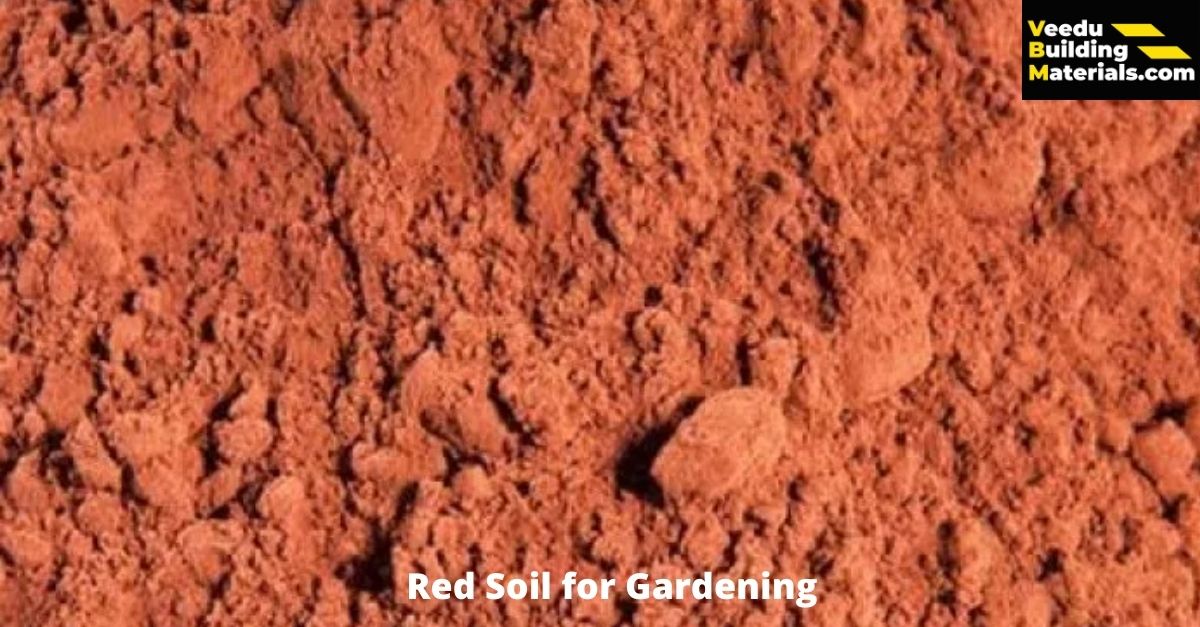Are you passionate about your kitchen garden and planning to try your hand with red clay soil? It can be a fantastic choice for your plants as long as you know how to manage it well. It is nutrient-rich soil with good moisture-holding capacity. However, it has poor drainage and forms lumps with excess water. So, the trick is to know how to keep it in a proper state to reap the maximum benefits in the form of an excellent crop. This short guide will tell you all about the Red Soil for Gardening including its properties, advantages, and disadvantages.
Red Soil for Gardening
Red clay soil is found in warm and humid tropical and subtropical regions. Its characteristic red color is due to the weathering of ancient crystalline igneous rocks that contain iron oxides. However, contrary to the common belief that the clay component of the soil hampers plant growth, it makes for perfect garden soil if appropriately used. The clay helps to retain water and nutrients. The presence of organic matter and nutrients, such as nitrogen, potash, phosphorus, and potassium, also adds to the fertility of the soil. However, the presence of iron oxide makes the soil acidic and low in calcium content. But you can easily overcome this problem by raising the pH level with added lime and other missing minerals.
Challenges While Working with Red Soil for Gardening
Red Clay soil needs special care to keep it in a state your plants love. Being a clay medium, its particles are tightly packed, limiting the supply of oxygen and water. It tends to form rocks/ lumps with excess watering in another case. Additionally, there is just the right proportion in which one can mix sand/gravel to it. If not handled properly, all these things can make working with red soil a messy experience.
Tightly Packed Clay Particles
Red soil is clay soil. Therefore, its particles are very fine and tightly compressed. It makes it very challenging to grow plants in it. The densely packed particles limit the supply of oxygen and nutrients to its roots.
Poor Drainage
Waterlogging is a common problem with clay soils than sandier soils. Rains and wetness can create highly compact soil particles that look like rocks. It then takes many days for the soil to get dry. It is attributed to its poor drainage characteristic. Waterlogging can limit its usability for home gardens.
Adding Sand/Gravel Needs Excellent Caution
You may plan to add sand/gravel to improve the permeability of the red soil. But it isn’t going to be accessible at all. One has to be very careful about the proportions of soil and sand. Sand should be around 50% of your garden soil to make it work. However, if you go off proportions, the consequences are bound to be disastrous. The soil may turn into a hard concrete-like substance upon watering. And there is no way to go back to its original form.
How to Make Red Soil an Excellent Growing Medium for Plants
Now that we have talked about the problems with handling red clay soil, you might worry about fixing them. Well, it is not that tough at all. All it requires is some patience and planning to get things right. Here are some tips to improve the soil quality and make it a rich medium for growing plants.
Add organic matter
Organic matter can work wonders in improving soil health. It lessens soil density and improves aeration. At the same time, it also enhances drainage, nutrient supply, and healthy microbial growth. Compost, organic manure, bark, and peat moss are excellent organic substances that can be mixed with red soil. They help to loosen the tightly packed soil particles.
Mulching
Don’t leave your soil bare. It can devoid the soil of its moisture and promote weed growth. Paper, plastic mulch, straw, or wood chips help form a layer at the base of the plant. As a matter of fact, this enables water retention, as well as controlling the temperature of the soil.
Add garden lime on an excellent Ph level
To increase alkalinity and decrease clumpiness of soil, one can add garden lime to it. It raises the PH level and improves the soil texture. Therefore, making it less compact and easier to work with. At the same time, it also improves aeration and drainage for healthy plant growth.
Water only as required
As already mentioned, overwatering can do more harm than good to the red soil. However, it doesn’t mean that clay soil requires any less water. To know the optimum water level, stick your finger in the soil to gauge its moisture content. Water only when it is dry. It is important to note that one should not try working with too wet/waterlogged soil. Because it will only create enough mess, give your soil time to dry before you can start planting in it.
Don’t walk on the soil surface
Walking flattens the soil surface and makes it compact. It hardens the soil crust, making it unsuitable for planting. Also, keep animals away from the soil. Pawprints and footprints are not suitable for red soil.
In the beginning, it may seem daunting to handle red clay soil. But once you know how to treat it the right way, it can work wonders for your plants. Some garden plants just love this soil medium. Such as lettuce, beans, broccoli, cabbage, and chard. The fine particles act as good anchors for their roots. Once you understand the properties of this soil, it can act as a rich growing medium for your garden plants.
Are you looking for red soil for gardening in Chennai? Well, just give us a call or order online.


Leave a Reply